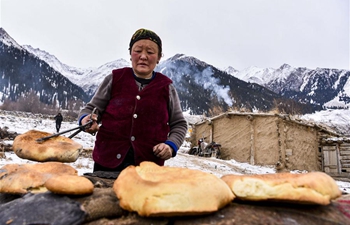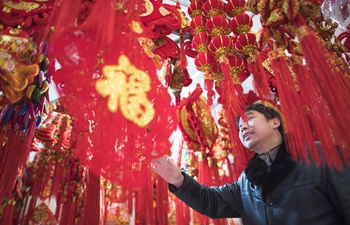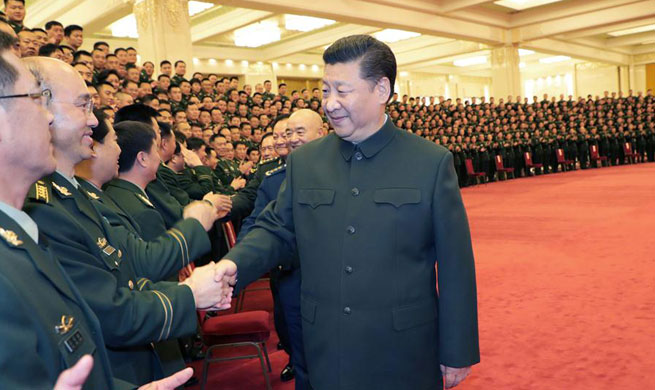By Xinhua writers Li Binian and Liu Huaipi
ZHENGZHOU, Feb. 4 (Xinhua) -- In a newly built museum, 37-year-old Mu Dongliang is looking at a black and white photo. The building in the photo reminds him of the school he worked for in the 1990s.
"When I started my career as a teacher in 1999, my office was in the building. It was poorly furnished," Mu said.
The school was situated in Muzhuang Village in Zhengzhou, China's central Henan Province.
The village goes back about 600 years and has always been largely farmland. It was not until five years ago that the village turned into a prosperous city with many tall buildings and glittering lights.
The change in Muzhuang show how Zhengzhou has urbanized, with many villages being demolished and renovated.
Now, Mu teaches at a new school built in the village, with state-of-art equipment.
"Not only schools have changed for the better," said Zhao Xinqin, 52.
According to Zhao, Muzhuang Village was on a low-lying area and it bothered the villagers as it often flooded when there was heavy rain.
"We are very happy to move out and live in apartments," she said.
To preserve the history of its villages, the Zhengzhou government built museums dedicated to the former villages.
"When visiting the museum, a different generation has a different feeling," said Zhao.
"For the older generation, the museum is more of a reminder of history. For the younger generation, it brings about nostalgia," she added.
In the museum of the Honghuasi Village, the introduction of the village "firsts" is impressive.
Among all nearby villages, Honghuasi Village was the first to have a bicycle in 1961, to use a tractor in 1971, to own a TV set in 1980 and to purchase an Audi auto in the 1990s.
In 2015, the village was demolished and renamed Honghuasi Community.
"The history of Honghuasi Village dates back to the Tang Dynasty (618-907 A.D.). For the younger generation, the museum and chronicle of the village is a reminder of what it was in the past," said Zheng Guoqing, a local official.
Before the demolition and renovation, Zheng had the village photographed from the sky and had the lives of villagers recorded.
A team of nine was established to compile a chronicle of the village, which was completed in June 2017.
The chronicle, with nearly 200,000 Chinese characters, keeps record of every detail of the village, such as its environment, population and customs. It also includes the biography of famous figure from the village.
"So far, 399 chronicles of villages have been compiled and 78 museums have been built," said Wu Xinyong, deputy director of the Zhengzhou City Construction Office.

















